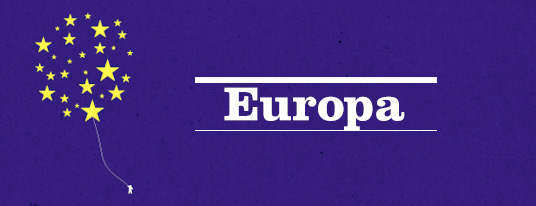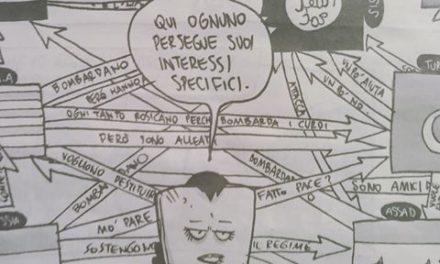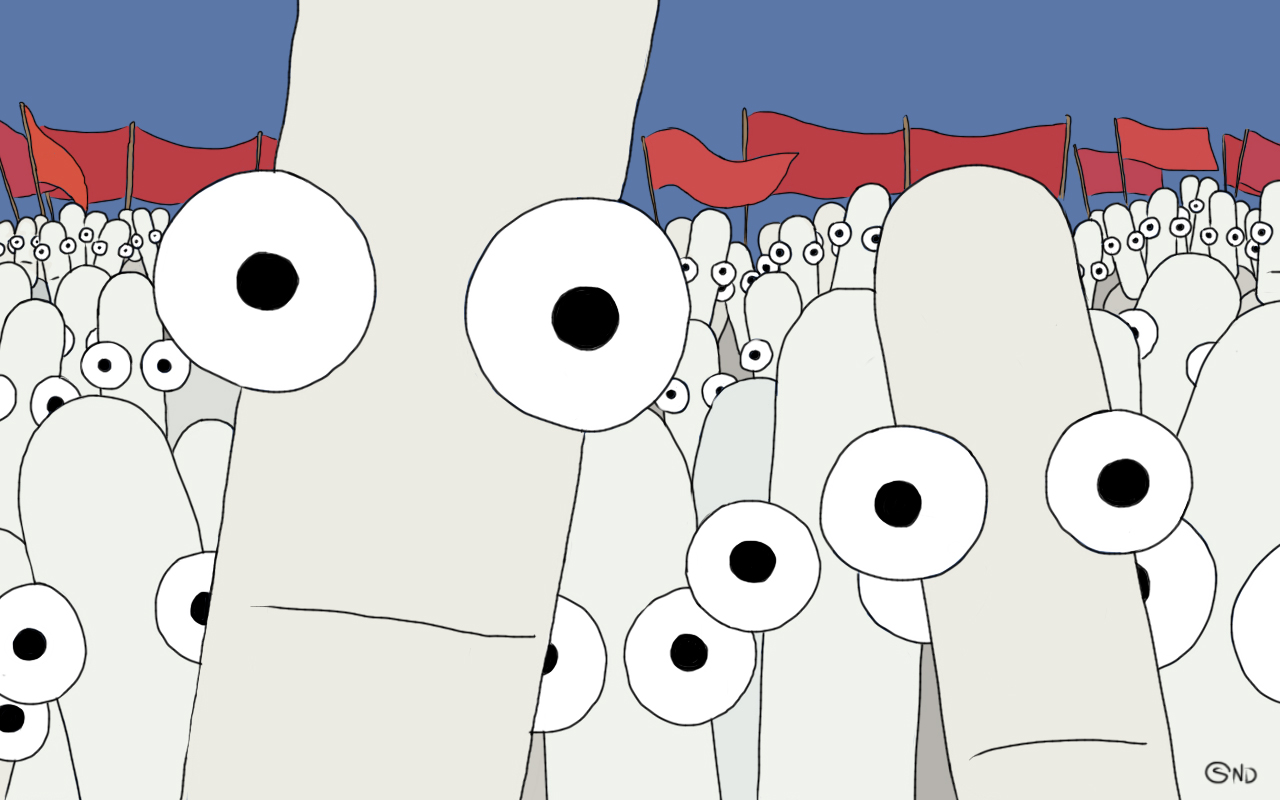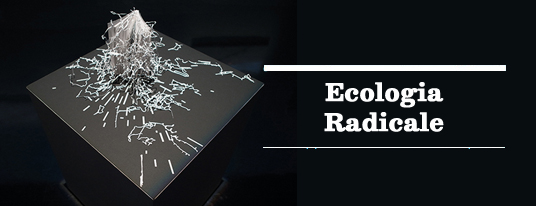by SANDRO MEZZADRA.
[June 23, 2016, “Berlin Lecture 2016”, Berliner Institut für empirische Integrations- und Migrationsforschung, Humboldt Universität. ]
To the “community of struggle” of the City Plaza Hotel, Athens
No pool, no minibar
No room service, but still
I would like to start this talk by warmly thanking Wolfgang Kaschuba and Manuela Bojadžijev for their introductions. More generally, being based at the BIM since last October, allow me to say that I have very much enjoyed this truly unique academic environment, where the multiple challenges posited by contemporary movements of migration are investigated in ways that combine quantitative and qualitative research, breadth and depth, civic engagement, critical commitment and scientific rigor. I am therefore particularly honored and pleased to have the chance to address you tonight within the challenging framework of the “Berlin Lecture”.
I will take this occasion to share with you some of the hypotheses that have been guiding my work on borders and migration for several years now. I undertake this in a situation characterized by an unprecedented politicization of the “borders and migration nexus” in Europe. Tens of thousands migrants and refugees stranded in camps in Greece, mass deportations, shipwrecks and deaths in the Mediterranean, fences and walls across the “Balkan route” as well as at the border between Turkey and Syria, proliferating controls within the Schengen space (from Brenner to Calais), EU and NATO naval operations: these are some of the images we immediately associate with the topic of my talk today. At the same time internal politics in many European countries tend to revolve more and more around the questions associated with the nexus between migration and borders. New social and political polarizations emerge, which end up raising anew and re-qualifying fundamental questions about the kind of society in which we want to live, the nature and subjects of social cooperation, the very meaning of democracy. In this lecture I will firstly aim at providing a general framework for an attempt to critically make sense of the political stakes surrounding borders. Secondly I will share with you some hypotheses regarding what is currently called the border and migration crisis in Europe, particularly emphasizing the ensuing challenges for migration scholars in this part of the world.
Borders, Étienne Balibar wrote at the turn of the century, no longer exist only “at the edge of territory, marking the point where it ends” but “have been transported into the middle of political space” (Balibar 2004, 109). This is particularly apparent today in Europe. In a book I recently co-authored with my Australian colleague and friend Brett Neilson, Border as Method, or, the Multiplication of Labor (2013) we try to demonstrate that the proliferation, mobility, and deep metamorphosis of borders are key features of “actually existing” processes of globalization. The very relationship between capitalism and “territorialism”, which underwent multiple transformations in modern history while continuing to take the territorial state as its main reference, seems nowadays challenged and continuously disrupted by processes of financialization, digitalization, and new logistical arrangements. Capitalism produces its own multiple spaces according to logics that are far from being grasped by the simple opposition between a “space of flows” and a “space of places”. These logics rather “hit the ground” in complex, often violent, and always crucially important ways. Nevertheless the expansion of contemporary capital’s “frontiers” negotiates and imposes its territorial assemblages in ways that challenge and often eschew “territoriality”, understood as “a legal construct that marks the state’s exclusive authority over its territory” (Sassen 2013, 23). This is not to say that territoriality – and the territorial state – withered away. It is rather to point to a set of gaps, disjunctions, and frictions between different forms of production of space that make up the global. The multiplication, mobility, and “heterogenization” of borders, as well as the more and more intense and vital character of the struggles surrounding them must also be understood against this backdrop.
It is easy to see that the modern notion of the border as a line dividing discrete territories in clear-cut ways, as a simple margin limiting their extension, is historically and conceptually connected with the legal construct of territoriality. A line – something mundane and ultimately banal, the job of land surveyors. And nevertheless we should be aware of the fact that in ancient times in Western and particularly in Roman history, the land surveyor was considered a sacred figure, whose task was close to a goddess’s task and whose field of action was circumfused by fog and dirt, violence and magic. This comes again to the fore if we think of Kafka’s K’s gesture, which raises the question of checking and tracing boundaries beneath a Castle where the voice of the Law keeps repeating that all is in order, since boundaries are well established and recorded. Repeating this gesture, which means considering the border from the point of view of its tracing, it appears clear that the border itself cannot be considered a merely “negative” limit. It rather takes on peculiarly productive, even “creative” characteristics, being the condition of existence of the two “things” it separates and distinguishes.
Just think of the notion of “territoriality” mentioned above. Could a “territory”, in the legal and political meaning of the term implied by that notion, exist without the tracing of a border surrounding and distinguishing it from other territories? And what about private property, especially once we pay attention to the role played by landed property as an influential model in the historical development of this crucial legal institution? “It was necessary to set up boundaries to the fields”, writes Giambattista Vico in his Scienza nova (1744), “in order to put a stop to the infamous promiscuity of things in the bestial state. On these boundaries were to be fixed the confines first of families, then of gentes or houses, later of peoples, and finally of nations” (Vico 1984, 363). Forget for a moment the lexicon and preferences of this 18th century Neapolitan philosopher, and you will grasp the essential core of his striking description of the continuity between the establishment of private property, the cultural practices and “order” of the family and the house, and the formation of the state from the angle of the productive nature of the border.
While this entanglement of private property, family, and the state is particularly important for any critical reading of modernity, there is a need to add that the productive nature of the border is an epistemic principle that allows us to make sense of a series of crucial developments in other, seemingly more elusive fields. Just to give a couple of examples, scholars of linguistics and comparative literatures have convincingly shown over the last years that modern languages and national literatures could only develop with the establishment of bordering devices to enable and manage their distinction as well as the communication between them. Or, to pick up a question that continues to trouble anthropologists as well as theorists and practitioners of “multiculturalism”, can we speak of an “ethnic community” or a “culture” without having previously traced a boundary that distinguishes them from other “ethnic communities” or “cultures”?
These are just scattered snapshots, but they allow me to make two important points for a critical understanding of borders in our contemporary global predicament. Firstly, borders appear to limit, constrain, and contain movement, in often arbitrary, violent, even “necropolitical” ways (Mbembe 2003). Nevertheless, in order to grasp their operations – and to effectively criticize their violence – we must also look at their “productive” functions, which means, simply put, at the specific forms of “order” they enable within the space they appear to merely circumscribe. I speak of a “productive” and even “creative” nature of borders in only analytical terms, of course, without implying any axiological “positive” evaluation of this nature (a simple overview of the global history of the modern notion of border as a line, in its inextricable connection not only with nationalism but also with the history of European and Western colonial and imperial expansion, would suffice to clarify this point!). Secondly, the semantic field of the border is densely heterogeneous, its symbolic meanings are multiple and span from ethics to culture, from languages to economy. The history of the modern “geopolitical” border as a line can also be understood as a process through which these disparate meanings of the border have been steadily attracted within a magnetic field crisscrossed by vectors of unification that ended up becoming processes of “nationalization” – with the “geopolitical” border at least in tendency circumscribing a discrete national society, culture, language, and economy. The gaps, disjunctions, and frictions between different forms of production of space that nowadays make up the global point to a situation in which these heterogeneous meanings of the border also diverge from each other and the principle of their unitary articulation is placed under increasing duress.
At least a third point has to be added in order to advance toward a critical theory of borders and also to foreshadow the relationship between borders and migration. The fences that close off migrants and refugees from a national space or a migratory route – say, in Idomeni, Greece – can certainly be seen as crystallizations of power, sealed by violence. Nevertheless the border can never be identified with a “thing”, be it a fence, a wall, or a bridge. Not least at the border, as we have learned both from Karl Marx and from Michel Foucault, power is indeed always a relationship. And the border itself must be analyzed in terms of the social relations that it encapsulates, enables, and articulates while being constituted by them. To adapt the words of Pablo Vila (2000), an Argentinian ethnographer who has worked for many years on the U.S./Mexican borderlands, borders are complex social institutions, marked by tensions between practices of border reinforcement and border crossing. These tensions lie at the root of specific forms of subjectivation that the border contributes to produce. And they provide an effective angle for the analysis of the conflicts and struggles that nowadays surround in particularly intense ways specific borderscapes in many parts of the world, including Europe.
Some of the most significant of these conflicts and struggles – from the border between U.S. and Mexico to the one between India and Bangladesh, from the Northern shores of Australia to the choppy waters of Southeast Asian Oceans – are associated with the movements of migrants and refugees. I think it is important to emphasize that this nexus between borders and migration, which seems so evident to us, has its own history and must be grasped in its distinct and conjunctural novelty. I am not simply referring to the point often made by historians, according to which migration control has only quite recently become a prominent function of political borders. Just to mention a symbolic date, the immigration station at Ellis Island was established in 1892, just two years after the Federal government assumed control of immigration in the U.S. In Europe the turmoil, nationalist agitation, and political conflicts surrounding Polish migration to the Eastern provinces of Prussia in the 1890s is often mentioned as a turning point with respect to the establishment of the nexus between migration and borders (with a series of selective measures of opening and closing of the Eastern border to balance the needs of the Junkers’ landed property for seasonal labor force and the “national” interests of the new German Reich). It is important to keep in mind this relatively recent historical origin of the “borders and migration nexus”. But it is even more important to be aware of the fact that the contemporary manifestations of this nexus are in turn particular and quite different from the ones that characterized such important moments in the history of migration, as for instance Transatlantic migration to the Americas at the turn of the Twentieth century, postcolonial migration and recruitment schemes of “guest workers” in Western Europe after World War 2, or even the “White Australia policy” and its adaptations until the early 1970s.
These moments in the history of migration have also been crucial both for the emergence of the definition of “international” migration in terms of border crossing and for the forging of the theoretical paradigm of migration studies. Just think of such influential contributions as the ones made in this respect by the founding works of the “Chicago School” of sociology or by critical analysis such as the one pursued by Stephen Castles and Godula Kosack in their Immigrant Workers and Class Structure in Western Europe (1973). I would like to call your attention to the fact that even a cursory review of this literature demonstrates that the topic of the border, although as I repeat it was crucial for the very definition of “international” migration, did not figure prominently in the table of topics and tools addressed and employed by migration scholars. The situation today is completely different, the nexus between migration and borders is widely acknowledged both as a crucial problematic in itself and as an effective epistemic perspective on migration (with such important questions as gender and race being for instance increasingly analyzed in terms of bordering devices cutting through and hierarchically articulating migratory experiences). What does this dramatic difference say to us in terms of the underlying transformations of migratory landscapes, patterns, and experiences in our age? My tentative and necessarily schematic answer to this question is that this difference points to the fact that the “encounter” with the border, its crossing, can no longer be simply considered as the inaugural moment and primary condition of the migratory experience, to be accomplished once for all in the biography of a would-be migrant. It rather tends to reproduce itself across large part of that experience and biography, with multiple manifestations of the border haunting migrants in their negotiations with citizenship and labor markets, in the urban as well as “national” spaces they inhabit and they contribute to transform and produce.
Behind this ubiquity of the border one can of course see many factors, including the multiplication and fragmentation of migration patterns and schemes and the disruption of their spatial and temporal coordinates, which have, for instance, been carefully mapped by Stephen Castles and Mark Miller in the several editions of their standard reference work, The Age of Migration (2013, fifth edition). More generally, as several scholars have demonstrated, global migration is increasingly characterized by “turbulence”, “unpredictability”, and “autonomy”, which challenge established legal arrangements (as in the case of asylum) and governmental regimes (see for instance Papastergiadis 2000; Bojadžijev and Karakayali 2010; Mezzadra 2011; De Genova 2013). What had been foreshadowed in particular and uncanny ways by movements of population in the wake of decolonization and anti-imperialist wars (just think for instance of the “partition” of the Indian subcontinent or of the so-called “Indochina refugee crisis”) seems to have turned into a distinctive feature of migration writ large in the global age. At the same time it is important to emphasize that this turbulence, unpredictability, and autonomy of migration intertwine with profound transformations of the economic and social systems within so-called countries of destination (not only in the “global North”).
The moments in the history of migration that I previously mentioned (be it in the U.S. in the early 20th century or in West Germany in the 1950s and 1960s) were connected with specific processes of “mass industrialization” and with the generalization of “free” wage labor as a standard reference for the working of the labor market. Under these conditions the recruitment of migrants implied a subordinated inclusion within that standard, with a huge deal of discrimination and even “overexploitation”, which, however, did not challenge the stability of the standard itself. Migrant workers were managed as a “supplement” to the autochthonous labor force, in an attempt – to put it in the words of Michael Burawoy in his classic essay, “The Functions and Reproduction of Migrant Labor” (1976) – to bridge the gap between the “two functions” of the reproduction of labor force in a given capitalist economy, which means its “maintenance” and its “renewal”. The situation could not be more different nowadays, when the flexibilization of production connected to processes of financialization and digitalization is prompting an explosion of the standard of “free” wage labor and complex dynamics of precarization, multiplication, and diversification of labor. The implications for migration management are momentous, as it can be easily grasped considering the fantasy of a “just-in-time” and “to-the-point” migration, which nurtures the evolution of migration policies in many parts of the world – including Europe. Ever more sophisticated “point-systems”, an obsession for filtering and selecting migrants according to their “skills” and “human capital”, the multiplication of temporary, seasonal, and circular recruitment schemes are among the most prominent manifestations of that fantasy (see for instance Xiang 2012; Latham, Preston, and Vosko 2014).
While old and new forces of the right increasingly politicize the difference between “us and them”, a process of fragmentation (and potentially of erasure) is silently at work both regarding the “us” (the figure of the citizen) and the “them” (the figure of the migrant, or the “foreigner”). It is in this situation that multiple internal borders are infiltrating formally unified political and social spaces, challenging established patterns and mechanisms of integration and blurring the boundary between “inclusion” and “exclusion”. Migrants experience both inclusion and exclusion in differential and selective ways, which are more generally symptomatic – to recall once again the lesson of the great Algerian migration scholar Abdelmalek Sayad (1999) – of wider social transformations. With their movements and with their (border) struggles they politicize the very boundary between inclusion and exclusion, demonstrating in very mundane and “vernacular” ways, that no “integration” is worth struggling for if it is not understood as a profound renewal of the very conditions of “living together” – as the invention of a new commonality. It may well be at this point that the concept of “post-migrant” society, developed by Naika Foroutan and other scholars in Germany, comes into play. As Manuela Bojadžijev has emphasized in several writings we are confronted here with a deep challenge to our own understanding of the political – as well as of its boundaries (see for instance Bojadžijev 2011). This is why such experiences as the occupation of the City Plaza Hotel in Athens, where 400 refugees are gathered under the motto “we live together – solidarity will win” are so important to us. They politicize a specific border that is becoming more and more important in migratory experiences – the temporal border, the temporality of waiting, of living suspended in holding camps, “hotspots”, and other structures – and they transform it into a chance for a new democratic invention and imagination.
This concept of temporal borders has several implications. It allows us for instance to grasp the particular condition of “generations” held within the cultural category of “migrants”, for instance through the German administrative category of “Migrationshintergrund” (migration background). Moving toward a more detailed analysis of developments surrounding “geopolitical” borders, the concept has been key to the analysis of the interrelated dynamics of acceleration, deceleration, and block that shape migration and its “management” in many parts of the world. Migrants’ routes to Europe, in particular, are dotted by “waiting rooms” in transit countries and cities as well as in the desert, be they self-organized within migratory networks, arranged and managed in often carceral modes by smugglers and traffickers or by governments and even NGOs. These “waiting rooms” can be considered as part and parcel of the specific “border regime” that has been emerging since the early 1990s in and around the European Union.
The notion of “border regime”, which has been recently developed by several critical migration and border scholars (see for instance De Genova, Mezzadra, and Pickles 2015, 69-70), deserves careful consideration here. To put it shortly, this notion underscores the heterogeneity of actors (from governmental agencies to the multifarious instantiations of the booming “migration industry”), discourses (from an emphasis on security to economic consideration and humanitarianism), technologies of surveillance and control (from digitalization to militarization) that are at the same time confronted by diverse actors in their attempts to cross borders or to facilitate their transgression. Speaking of a European “border regime” does not obscure the unbearable amount of violence and the “necropolitical” effects connected with its operations. It rather aims at shedding light on the dynamic, contested, and even contradictory nature of the assemblages of power deployed at the border – once again: on the multifarious relations that constitute them.
The emergence, periodic crisis and transformations of the European border regime can be taken as particular instances of what I was calling before the “productive” nature of borders. Far from being a marginal aspect of the European integration process the border regime has played crucial roles in the establishment and constitution of the European space since the birth of European Union. The heterogeneity of this space, often emphasized by scholars, has been enabled and “mirrored” by the multiple scales of operation of the European border regime. Articulating “freedom of movement” within the Schengen space with a variable geometry of control of the “external frontiers” this regime has always also and simultaneously been a mobility regime. “Externalization” of border control, which means involvement of “neighboring” and “third countries” in the management of the European borders, has been a key feature of this regime at least since the agreements between Germany and Poland in the early 1990s. While it is important to critically emphasize the (often lethal) processes of exclusion of migrants and refugees the European border regime has prompted, it is even more important from an analytical point of view to focus on the processes of selective, differential, and hierarchical inclusion it has enabled. The European border regime has built over the last two decades the overarching framework within which multiple vectors and practices of mobility (internal as well as external, even in illegalized forms) have traversed, constituted, and materially transformed the European space.
It may appear counterfactual to consider the European border regime as a mobility regime while we are overwhelmed by the images I evoked at the beginning of my talk – images of fences and walls, with around 60.000 migrants and refugees stuck and stranded in holding camps in Greece, which seems to be doomed to become a huge “hotspot”. Nevertheless I am convinced that it is precisely these images that bear witness to the fact that what continues to be discussed in the media and in public discourse as a “migration” or “refugees crisis” is indeed a deep crisis of the European border regime (Bojadžijev and Mezzadra 2015). This crisis has its own genealogy, which includes such important moments as the economic crisis (with its implications particularly for Southern European countries like Italy or Spain, where illegalized migrants had found employment in several economic sectors in previous years) and the uprisings in the Maghreb and Mashreq (with the fall of such regimes as the ones of Ben Ali in Tunisia and Gaddafi in Libya, which had played key roles in the processes of externalization). On top of but certainly not independent of these developments, the “summer of migration” in 2015, with the unprecedented and uncontainable challenge posited by hundreds of thousands of migrants and refugees to European borders across and beyond the “Balkan route”, has definitely accelerated and dramatized the disruption.
The crisis of the European border regime is far from being limited to what is happening at the “external frontiers” of Europe. Its backlash within the European space has been momentous – with effects ranging from the reintroduction of controls and checkpoints at several Schengen borders to the establishment of a set of limits to the freedom of movement and settlement of European citizens (particularly those coming from the South) in Northern European countries. More generally, the deep divisions within the European Union in front of the challenge posited by migrants and refugees – mainly but not exclusively around the East/West axis – have further prompted what today appears to many observers as an “existential crisis” of the integration process as a whole (see for instance Balibar 2016, 7). The border provides us in this respect with a particularly effective angle on a situation in which not only tens of thousands of migrants in Greece, but the European Union itself appears to be stuck and stranded in a profound impasse.
One could say that in the wake of the “summer of migration” a clear tendency towards the renationalization of border controls and policies has gone hand in hand with processes of further Europeanization. The latter can be instantiated by the direct role played by the European Union in the agreement with Turkey, by the strengthening of Frontex and its development into a “fully operational European Border and Coast Guard system”, by the EUNAVFOR operation in the Central Mediterranean as well as by the EU backing of NATO’s presence in the Aegean Sea. It may be possible to discern in the plans of logistical reorientation of the border regime through the establishment of “hotspots” and corridors the governmental rationality, or fantasy shaping these European interventions. But it is easy to see that this logistical reorientation is far from being “smooth”, on the one hand because it is predicated upon coercive policies of control, block, diversion, and manipulation of migratory routes, and on the other hand because the parallel processes of renationalization of border controls in several European countries obstruct “relocation” and mobility across “hotspots” and corridors. In such conditions emergency management stands out as real unifying thread running through European interventions and measures in face of the crisis of the border regime (Kasparek 2016).
Several scholarly analysis have demonstrated that no naval operation in the Mediterranean – in spite of the humanitarian rhetoric often employed or of the declared aim to target “smugglers and traffickers” – has made passage more secure for migrants (see for instance Heller and Pezzani 2016; Garelli and Tazzioli 2016). We are now confronted with the fact that even crossing the border between Syria and Turkey may be lethal for people fleeing from war, as a direct consequence of the agreement signed with the Turkish government by the European Union. Besides disrupting the foundations of the right to asylum, indeed, this agreement objectively implies a legitimization of the authoritarian nationalism of Erdogan’s regime within Turkey and its regional role and ambitions in the framework of the Syrian war. The management of the crisis of its border regime therefore also has paramount implications for the European Union with respect to its external politics (while we witness particularly in Germany its implications for internal politics in the wake of the “Armenia resolution” of Parliament).
The emergency management of the crisis of the European border regime has led to a situation in which tens of thousand of migrants and refugees are stranded in Greece and Turkey, in which crossing the Mediterranean has become more and more dangerous and expensive, in which the power of blackmailing of the Turkish government has been further entrenched, and in which the proliferation of fences and walls at the “external frontiers” of the European Union has been met by the dissemination of a set of limits to freedom of movement within the Schengen space as well. There is a need to denounce the huge amount of human suffering and violence connected to each of these moments of the crisis. But once again, consistent with the theoretical framework for the critical analysis of borders I sketched out in the first part of this talk, I do not think that what is at stake in the current crisis is simply an attempt to “seal” European borders and to keep migrants and refugees “out”. Sure, many of them are and will be kept out! But the crisis of the European border regime will not be over unless the border regime itself is reorganized in ways capable of restoring its function as a mobility regime. This is, very simply put, because Europe needs migration – as is again and again confirmed by demographic as well as economic reports produced at every institutional level across the continent. “Die Abschottung ist doch das, was uns kaputt machen würde” (sealing-off would kill us), declared Dr. Wolfgang Schäuble with his usual sharp clarity in a recent interview with Die Zeit. This need has to be addressed, at least in the medium term. This is in my opinion a first crucial challenge for migration studies against the backdrop of the current crisis of the European border regime: to read this crisis “against the grain”, attempting to discern the contours of emerging forms of mobility management and “inclusion” in a situation characterized by images and realities of immobility and “exclusion”.
What I was calling before a project of logistical reorganization of the border regime through the establishment of “hotspots” and corridors points in this direction, because it seems to correspond to the flexible, temporally and spatially calibrated pattern of migration management that is increasingly predominant in the present. I have already mentioned the obstacles and frictions for this project arising from processes of renationalization of border control. What is to be added now is that such a project of logistical reorganization has also to confront the challenge posited by migrants themselves, by the turbulence, stubbornness, and autonomy of their movements. And we must emphasize that it is no paradox that these movements compose a force that, through an elementary but no less radical claim and practice of freedom, points toward a different kind of Europeanization – different than the one I referred to speaking of the policies of the European Union. The meaning of Europe itself emerges therefore once again as a crucial stake in the tensions and conflicts played out in the crisis of the border regime.
Migration to Europe will continue over the next years – both because of the push of migrants and because European economies and societies need migration. “Stopping migration” is a reactionary and ultimately racist fantasy that produces concrete effects in the everyday life of thousands and thousands of men, women, and children on the move. While we denounce this fantasy we must insist upon the fact that it is not a realistic prospect. It rather contributes to increasing the severity of conditions under which migration will happen in the near future as well as of the lives of migrants already based in Europe. In both our scholarly work and our civic and political engagement, in the multiple domains of cultural life as well as in the media, we must cultivate an awareness of the fact that the clashes and conflicts surrounding the crisis of the European border regime reverberate within the cities we inhabit and even within the concepts and words we use to “speak” migration. These reverberations imply a dissemination of “fault lines, conflicts, differences, fear, and containment” (Mohanty 2003, 2). But they also challenge us to invent new forms of social exchange and cooperation, solidarity, commonality, and institutions – beyond the idea of an existing social, political, and legal order within which migrants simply would have to “integrate” or “be integrated”.
References
Balibar, É. (2004), We, The People of Europe? Reflections on Transnational Citizenship, Princeton, NJ – Oxford: Princeton University Press.
Balibar, É. (2016), Europe, crise et fin?, Paris: Le Bord de l’Eau.
Bojadžijev, M. (2011), “Das ‘Spiel’ der Autonomie der Migration”, Zeitschrift für Kulturwissenschaften, 5 (2): 139-146.
Bojadžijev, M. and S. Karakayali (2010), “Recuperating the Sideshows of Capitalism. The Autonomy of Migration Today”, in e-flux journal, 17, http://www.e-flux.com/journal/recuperating-the-sideshows-of-capitalism-the-autonomy-of-migration-today/
Bojadžijev, M. and S. Mezzadra (2015), “’Refugee crisis’ or crisis of European migration policies?”, in Focaalblog, http://www.focaalblog.com/2015/11/12/manuela-bojadzijev-and-sandro-mezzadra-refugee-crisis-or-crisis-of-european-migration-policies/
Burawoy, M. (1976), “The Functions and Reproduction of Migrant Labor: Comparative Materials from Southern Africa and the United States”, American Journal of Sociology, 81 (5): 1050-1087.
Castles, S. and G. Kosak (1973), Immigrant Workers and Class Structure in Western Europe, Oxford: Oxford University Press.
Castles, S., H. de Haas, and M.J. Miller (2013), The Age of Migration, fifth edition, Basingstoke: Palgrave Macmillan.
De Genova, N. (2013), “The Perplexities of Mobility”, in Critical Mobilities, ed. O. Söderström et al., London: Routledge: 101-122.
De Genova, N., S. Mezzadra, and J. Pickles (eds), “New Keywords: Migration and Border”, Cultural studies, 29 (1): 55-87.
Garelli, G. and M. Tazzioli, “Warfare on the Logistics of Migrants Movements: EU and Nato Military Operations in the Mediterranean”, Open Democracy (June 16), https://www.opendemocracy.net/mediterranean-journeys-in-hope/glenda-garelli-martina-tazzioli/warfare-on-logistics-of-migrant-movem
Heller, Ch. and L. Pezzani, “Ebbing and Flowing: The EU’s Shifting Practices of (Non-)Assistance and Bordering in a Time of Crisis”, in Near Futures Online, 1 “Europe at a Crossroads”.
Kasparek, B. (2016), “Routes, Corridors, and Spaces of Exception: Governing Migration and Europe”, Near Futures Online, 1 “Europe at a Crossroads”
Latham, R., V. Preston, and L.F. Vosko, eds (2014), Liberating Temporariness? Migration, Work, and Citizenship in an Age of Insecurity, Montreal & Kingston: McGill-Queen’s University Press.
Mbembe, A. (2003), “Necropolitics”, Public Culture 15 (1): 11-40.
Mezzadra, S. (2011), “The Gaze of Autonomy. Capitalism, Migration, and Social Struggles”, in The Contested Politics of Mobility: Borderzones and Irregularity, ed. V. Squire, London: Routledge, 2011: 121-142.
Mezzadra, S. and B. Neilson, Border as Method, or, the Multiplication of Labor, Durham, NC, and London: Duke University Press.
Papastergiadis, N. (2000), The Turbulence of Migration: Globalization, Deterritoralization, Hybridity, Cambridge: Polity.
Sassen, S. (2013), “When Territory Deborders Territoriality”, Territory, Politics, Governance, 1 (1): 21-45.
Sayad, A. (1999), La double absence. Des illusions de l’émigré aux souffrances de l’immigré, Paris: Seuil.
Vico, G. (1984), The New Science of Giambattista Vico. Unabridged Translation of the Third Edition (1744) with the addition of “Practic of the New Science”. Transl. Thomas Goddard Bergin and Max Harold Fisch. Ithaca: Cornell University Press.
Vila, P. (2000), Crossing Borders, Reinforcing Borders: Social Categories, Metaphors, and Narrative Identities on the U.S.-Mexico Frontier, Austin: University of Texas Press.
Xiang Biao (2012), “Labor Transplant: “Point-to-Point” Transnational Labor Migration in East Asia”, South Atlantic Quarterly, 111 (4): 721-739.
* The second part of this talk is based upon two workshops held at the welcome2stay meeting (Leipzig, June 11, 2016) and at the occupied City Plaza Hotel (Athens, June 17, 2016). I thank all the participants for their contribution to the discussion and for the “good vibrations” that shaped both meetings.

















